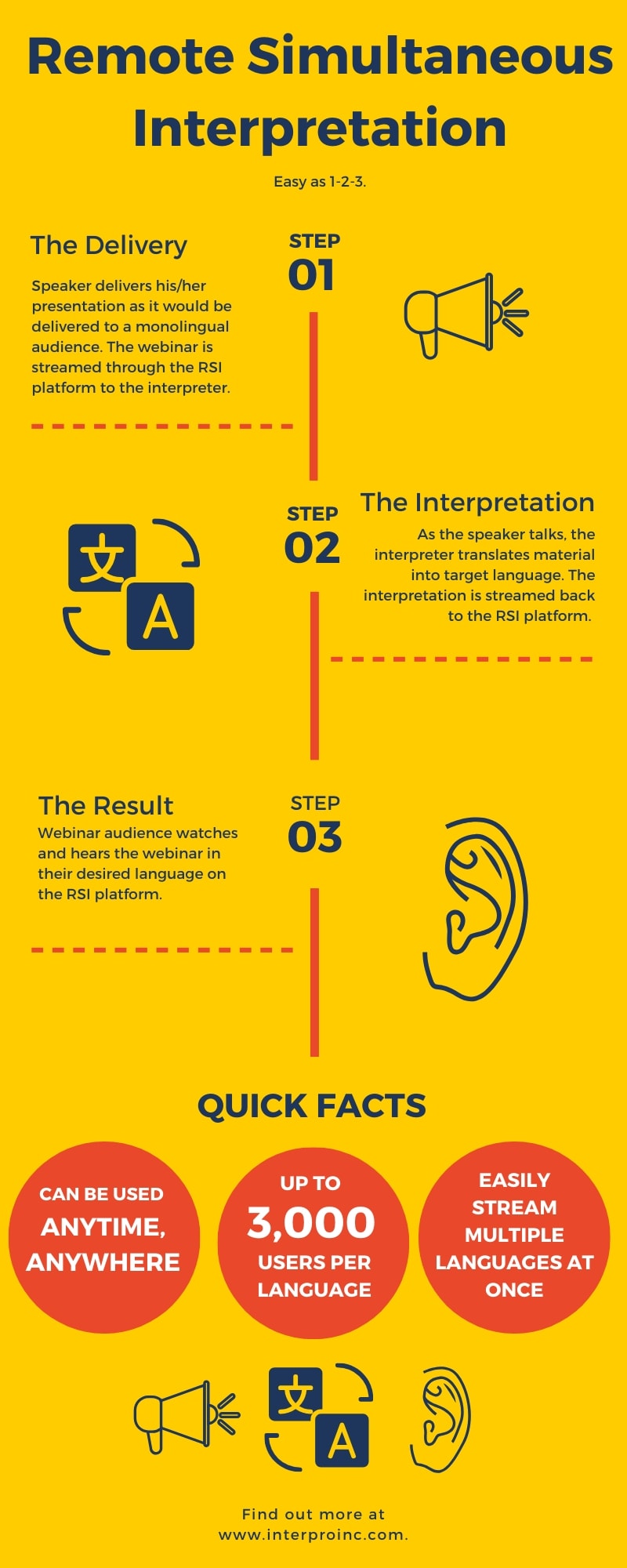
Technology has given people greater opportunity to connect with others from around the world without ever having to leave their offices or homes. Innovations have allowed companies to grow their businesses across borders, collaborate with talented individuals from different cultures, and connect with other professionals in their industry.
But more than simply allowing us to overcome distance challenges, technology is helping to make language barriers a thing of the past. In today’s world of international businesses, clear and accurate communication across languages has never been more important. Allowing people to speak, read, and hear information in their mother tongue engages audiences and ensures that information is correctly understood.
More and more, businesses are offering multilingual content, products, and more to customers and to their own employees located around the world. One of the many important services that assist these organizations in getting their message across is webinar interpretation.
What is webinar interpretation?
Webinars and similar online collaborative conferencing allow people to join in on meetings and seminars, regardless of location. This form of digital communication is extremely popular because it allows companies to reach large audiences quickly, easily, and at a relatively low cost. Unfortunately, because webinars are live events, companies don’t have the luxury of time to dub or create subtitles in different languages for their international audiences. This can be a problem for companies needing to communicate with employees and customers speaking different languages.
Webinar interpretation, in the form of Remote Simultaneous Interpretation (RSI), offers a solution to this problem. Remote Simultaneous Interpretation is a service that can translate your webinar presentations and conference events to whatever languages your audience desires in real time.
How is Remote Simultaneous Interpretation different than other types of interpretation?
You may be familiar with other methods of interpretation that are used for webinars and online conferencing, namely, consecutive interpretation. To better understand Remote Simultaneous Interpretation and the benefits it offers, let’s take a look at an alternative webinar interpretation method.
Consecutive Interpretation
As the name suggests, with consecutive interpretation, translation happens consecutively to the initial delivery. A speaker will divide his/her presentation into multiple segments and pause after a section is delivered. The interpreter, who takes notes while the speaker is talking, will then proceed to relay the same material into the target language. Once the interpreter is finished, the speaker will continue until the next pause. This process continues until the speaker’s presentation is over.
The biggest downside to consecutive interpretation is that it takes time – and a lot of it. Because the speaker has to stop and allow the interpreter to translate everything that was just said, it can take up to twice the amount of time. The rhythm of the presentation is interrupted, and audiences have to listen to the presentation in both languages.
While this type of interpretation may work for short periods in small intimate settings, it is not the best solution for translating longer seminars and presentations to larger audiences.

Remote Simultaneous Interpretation
Remote Simultaneous Interpretation is similar to traditional on-site simultaneous interpretation, but it uses technology to its advantage to allow interpreters to do their job from virtually any location. This eliminates the need for on-site interpreters working in sound booths.
This means that you can hold a webinar in Location A, have it seen and heard in a different language in Location B, while the interpreter providing the translation is sitting in Location C — all at the same time.
While the other methods of interpretation set out to accomplish the same objective as RSI, they are not without drawbacks and limitations. Remote Simultaneous Interpretation offers solutions to these issues and provides a number of additional advantages.
How does Remote Simultaneous Interpretation work?
Remote Simultaneous Interpretation can be broken down into three simple steps:
- The speaker delivers their presentation. The person speaking gives their presentation, speech, etc., as would be delivered to a monolingual audience. Both the audio and images are streamed to a remote interpreter through a technology platform designed specifically for RSI.
- The remote interpreter translates. As the speaker speaks, the interpreter translates the material into the target language, speaking into a microphone while listening. The translation is streamed to a cloud-based RSI platform.
- The audience receives the webinar in their language. Webinar attendees watch the speaker and hear the webinar in their desired language from the RSI platform.
This may sound like a lot going on, but the process is simultaneous. Thanks to technology and high-speed internet, the initial delivery, interpretation, and reception occur almost as if the audience were listening to the webinar live in their native tongue.
What are the benefits of webinar interpretation?
Working with professional, native-speaking interpreters will enable your audience to clearly understand the message with its intended context, no matter the language. Interpreters are paired by subject matter expertise, so even the most complex information can be accurately conveyed across languages and cultures.
Aside from the benefits that come with being able to share webinars across multiple languages, RSI-based webinar interpretation comes with a number of advantages.

- Reduced costs: Bringing interpreters to an event can be costly due to expenses associated with travel, lodging, and other considerations. With Remote Simultaneous Interpretation, interpreters work anywhere via their internet connection, so they are not needed in person. You’ll also cut back on rental expenses for specialized sound booths and other necessary equipment.
- Simplification: Planning becomes easier when you don’t have to worry about coordinating the physical arrival of multiple people. Quick and easy planning is especially beneficial when conferences and meetings are scheduled or modified at the last minute.
- Flexibility: RSI offers a great deal of flexibility for organizations. It is accessible anytime and anywhere — all that is needed is a high-speed internet connection. Ramp-up time is short, so interpretation assignments can be changed and rearranged easily, no matter the size of the audience.
- Farther reaching: Especially compared to the limitations of consecutive interpretation, RSI allows for the webinar to reach more audiences. Instead of just one or two languages being offered, a single webinar can be translated into several different languages simultaneously. RSI services are also accessible in previously hard-to-reach locations. The possibilities are endless!
- Scalability: Whether your audience consists of 15 or 500 participants, you are covered. Today’s RSI platforms can typically accommodate up to 3,000 users per language.
- Quality: Though an interpreter may be located hundreds or thousands of miles away, audio quality is not sacrificed thanks to state-of-the-art RSI technology. Translation-wise, the best of the best interpreters can be sourced due to the remote location advantage. This means that you’ll get the best talent out there, not just what’s geographically closest.
Key to the success of your event is working with an experienced Project Manager who will know and respect the specific needs of your particular project. They understand the most important details and know what needs to happen in order to make your webinar a success. They serve as a point of contact between the interpreters and your organization, saving you time and effort.
How to Assure a Great Webinar Interpretation Experience
Like most things involving technology, there are a few tips to keep in mind that will assure you and your audience have a successful RSI-based webinar interpretation experience:
- Assure that there is access to high-speed internet: Both your interpreter and audience will rely on the webinar being streamed to them. Poor internet quality can lead to skipping audio and lagging video, which may result in gaps in the translation.
- Utilize an acoustic-friendly room: Set yourself up for success by setting your room up with audio in mind. Check the room acoustics and eliminate any distracting background noises. Echoes or loud hums can make it difficult for your interpreter and audience to hear what is being said.
- Run through a pre-show test: Speakers aren’t the only ones who need to prepare for a webinar presentation. Just to double-check that everything is working properly, do a quick run-through before the webinar takes place. You don’t want your speaker to begin, only to realize that there’s a dead microphone battery that throws a wrench in things.
- Familiarize yourself and others with the platform and controls: As part of the pre-show test, you should also familiarize yourself, and those who will be speaking during the webinar, with any necessary controls like on/off, mute, and record switches.
- Give speakers tips on maintaining audio quality: It never hurts to remind your speakers and moderators to be cautious of noises that may detract from audio quality, such as shuffling papers or loud typing.
Following these suggestions, and working with an experienced provider of RSI-based interpretation services, are critical to ensuring the success of your webinar interpretation.
Category: Interpreting
Tags: Guides, Interpreting
Service: Multilingual Web Meeting
Don't forget to share this post!
Stay Updated with Interpro
Subscribe to our newsletter for the latest updates and insights in translation and localization.







